How to cut porcelain and ceramic tile without chipping? Use 6 simple methods
As an Amazon Associate I earn from qualifying purchases.
You can use many methods, but if you’re using a wet saw or angle grinder with the diamond-tipped blade, the simple way to cut porcelain and ceramic tile without chipping is to work with a sharp blade with a slow approach.
Another strong alternative is to use the tile cutter, and it is one of the most valuable assets when dealing with tiles. You can also use tile nippers, glass cutters, and any sharp object. I have discussed broad notes on these tools’ uses.
You can sharpen your blade by using dressing stones. Use it after every 5 to 10 cuts, and every time you will get the exact perfect result.
Here I’m going to discuss how to cut porcelain and ceramic tile without chipping them with six easy methods step by step.
Contents
How to stop chipping tile when cutting with a wet saw and angle grinder
In this section, I’m going to tell you how you can stop your tile from chipping while you’re using either with a wet saw or even with an angle grinder that has a dry-cutting diamond blade on it.
Now, what happens if these diamond blades are not sharp? If it is not sharp, then you can use a dressing stone. It happens when you have performed a lot of times, and then your blade gets less sharpen.
The dressing stone is something that you’re going to use to clean your blade up. So that it gets those diamonds nice and sharp, and you can use it to cut through that tile like a hot knife through butter.
Not every situation is goanna be that your blade is dull. When you turn on your saw, every blade has a little bit of a wobble in the very beginning before the RPMs really get going.
If you have a severe wobble in your blade or if you’re noticing that when you’re cutting that your tile is breaking, then there’s a good chance that your blade could be bent.
If that is the situation, you’re probably going to have to get a new blade, but either way, you still need to get one of these dressing stones.
I prefer you should use dressing stones after every five to ten cuts. It depends on the tile that you’re cutting.
If you start noticing chipping in your tile, then you just need to use the dressing stone through your blade to clean it up nicely, whether you’re using a wet saw or angle grinder.
1. Cut porcelain, ceramic, glass and marble tile with an angle grinder
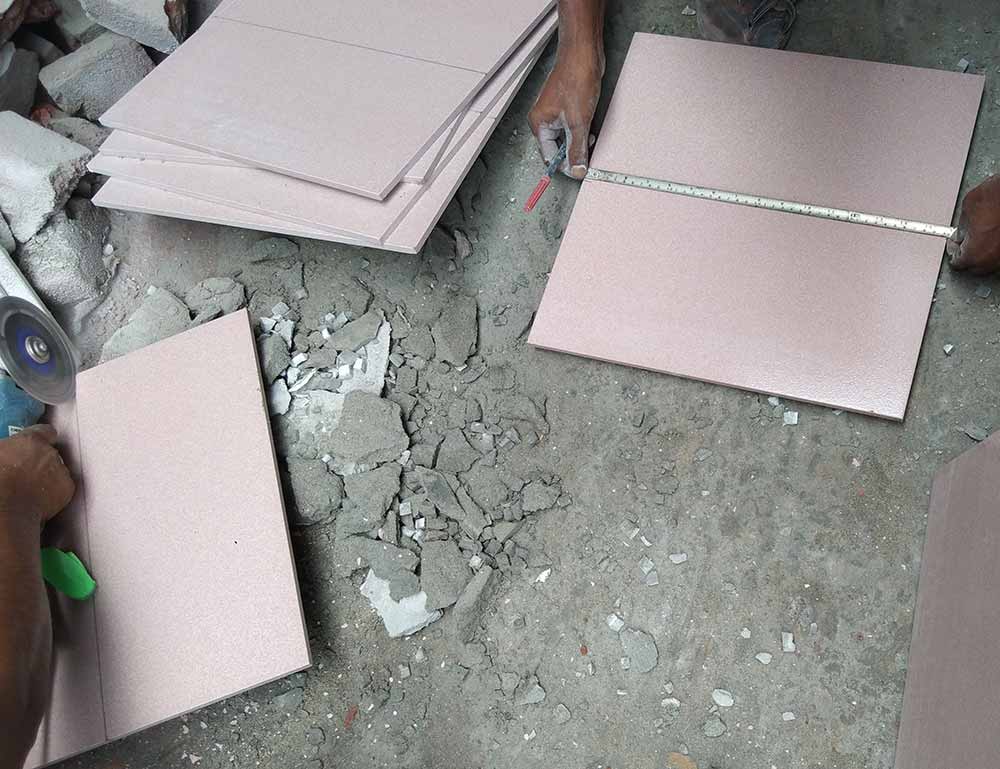
Cutting tile with an angle grinder is pretty basic, like cutting all other kinds of stuff. It is a simple and effective way to cut the Porcelain and Ceramic tiles, but you need a solid blade and right angle grinder.
You just have to adjust a diamond blade in the angle grinder, then it will be the perfect porcelain tile cutting with the minimization of chips, and this method is cheap also.
For cutting these types of tiles, you only need a solid diamond blade, and the rest of the process is like wear safety equipment, use the right blade, and start with a slow approach initially.
Required Tools: Angle grinder with a diamond blade, safety equipment, and pencil or marker.
- Like the wet saw, get your measurement and make a visible line with a marker to have a clear idea of where you are going to cut.
- For cutting the tile, it is better to use a nice and strong diamond blade. Choose the perfect blade and setup correctly.
- Wear your safety equipment like gloves and goggles so that you can avoid danger.
- Start cutting from the start point with a slow approach because you don’t want any unwanted cut on tile or harm your body.
Many people ask me which angle grinder would be best if I cut porcelain, ceramic or other tiles. So my answer would be you can try Bosch 1375A 4-1/2 or DEWALT DWE4012 4-1/2-Inch Angle Grinders.
And if you’re looking for a cordless grinder, I recommend you go for DEWALT (DCG416B) FLEXVOLT ADVANTAGE.
You can use GoYonder 4.5 Inch Super Thin Diamond Blade in the blade section. For me, it’s the perfect choice for cutting almost all types of tiles.
2. Cut porcelain and ceramic tile with a wet tile saw
Cutting porcelain, ceramic, or marble tiles with a wet saw is the most common and popular way to cut. The wet saw benefits are that you can cut the most smooth edge compared with other machines, straight cut, and proper finishing.
There are some other methods too that I also discuss in this article but in this section, let’s focus on cutting with a wet saw.
Required Tools:
Wet saw (Diamond blade saw), Performing table, Marker pen, Safety equipment (Eye protection, Hand protection gloves, and Earplugs)
1. If you have a wet saw, then you already have a wet saw with a table setup. It would be best if you marked on your porcelain or ceramic tile and setup for the cut.
2. Make sure your wet saw tank is loaded with water. Obviously you don’t want a bunch of dust and have a dry cut.
3. Your next step is to adjust the wet saw to cut a depth of 1/8 inch into the tile for the shallow cut. Please don’t set it entirely through the whole of it.
4. Place the tile properly on the platform. Now let bring the glazed face or upper part of the tile towards the blade. Now you have options if the blade comes at the bottom, it down the face and if the blade comes from the top, reverse the tile face simply.
5. The final step is to turn on the saw, slowly push the tile into the blade, and there you go, you have a perfect shallow cut.
A solid tile saw with a high-quality blade is a perfect combination for any tile cutting. You can try SKIL (3540-02) 7-Inch Wet Tile Saw for small or medium uses, and for professional uses, I would recommend you go for DEWALT (D24000S) 10-Inch Wet Tile Saw with Stand.
For a blade that lasts long, you can try QEP 6-7003Q 7-inch or QEP 6-1008BW Black Widow 10-inch premium blade for a smooth cutting experience.
Things you must know about tile saw before start cutting.
Continuous water supply, Shallow cut, and Adjustability of saw
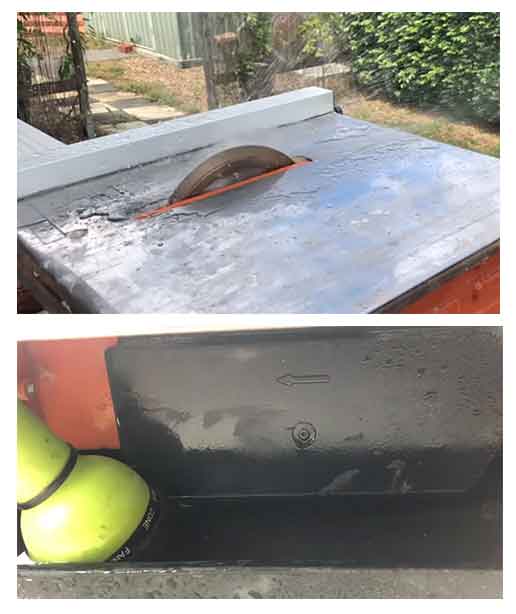
The water tank or reservoir must be filled under the platform with a continuous water supply or have enough water to perform the whole task.
The wet saw need to be adjusted to cut to a depth of 1 by 8 inch into the tile, don’t adjust it for entirely so that it can go through all of it.
If the saw has a lowers blade, then depth is adjusted back of the saw blade near where the hinge is placed.
In some of the models, the platform needs to be adjusted instead of the blade. That actually depends on the machine type. Both adjustments are very easy to perform.
Understanding the cutting depth is not that difficult or critical you’re thinking, but yes, remember that the saw’s blade must not perform more than half or tile thickness.
After the placement, you have to gently engage the saw into the tile to make a shallow cut across the tile.
Then you can reset the blade to perform the full cut to the whole tile, or a notch must be cut through into one end so the tile could be cut easily.
Notching One End
Place the tile on the platform with one end of the marked line. It would be best if you placed it like the tile facing the blade. If you scored the surface with a shallow cut, then one end of the cut should face the blade. After that, turn on the saw and then perform the cut slowly.
After that, you have to push the saw to perform the cut. Gently push 1 or 2 inches mostly depending on the tile’s size to get the proper cut. If the tile is small, then cutting an edge within 1 cm would be great.
If the tile is a 12-inches square tile, then you need to cut nearly 2 inches from the edge side.You have to rotate the tiles to the opposite corner and then perform the cut in the marked line.
Finally, engage the saw totally, and the perform cut across the line to the initial cut. While the cut is done, turn off the saw and place it safely.
[Safety Notes: When cutting tile don’t be afraid of the saw. Put your earplugs in and put the goggles on to protect your eyes.
The blade itself is coated with diamonds if touched with soft skin, it’s really not going to do anything to you at all.
If you were to touch it with your fingernail being a hard surface like the tile, it could put a nick in your fingernail. So don’t be too afraid of the saw but use caution.]
3. Cut a tile with a tile cutter or snap cutter
Tile cutter or snap cutter is a very common tool for cutting a variety of tiles like porcelain, ceramic, mosaic, glass, and others.
This is the best option if you only need to cut a few tiles and don’t want to spend a huge money on an expensive tool. Also, you do not need much experience to use this tool. They are used for getting straight cuts only.
It is one of the less expensive cutting tools on this list, and you can choose from $50 up to $900. The $50 snap cutters are fine for ceramic tiles.
Don’t use any handheld manual cutter. It is hard to have a straight cut, and there is a big chance that you can cross over the visible line with handheld cutters.
Obviously, you don’t want to waste your money. I strongly recommend you avoid handheld tile cutters.
Required Tools: Tile cutter, Tiles, Pencil or Marker
- Make your measurements and mark the visible line using a marker or pencil to draw the particular line you want to cut.
- Remove the handle and slide it back out of the way. Then rip the fence and adjust it accordingly to the finished size that you want.
- Lay the tile on the cutter accurately and line the wheel up with your mark so that you don’t cut extra or less tile portions.
- Then roll the wheel across the whole surface of the tile right from side to side. Don’t push real hard on it and make about two or three passes.
- Now that you’ve made the score mark push the slide all the way to the end. So that just the little foot is going to be on the tile, not the wheel.
- Finally, put some pressure down on the handle. It doesn’t take much pressure, and it will break that tile right off.
4. Cut porcelain or ceramic tile with a Glass Cutter
If you have a small amount of tile and don’t want to use any big and fancy tools, a glass cutter can be your handy tool.
You don’t need any safety equipment for performing this task yes you can use goggles. You know it is an easy and straightforward process.
You can use glass cutters for ceramic and porcelain tiles. First, you have to make a deep scratch and then bend it down to get two tiles. It is that simple for better understand; let’s jump into the work process steps.
Required Tools: Glass cutter, pencil, Square (if needed)
- To cut tile with a Glass cutter, you first need to use a marker or pencil to draw the particular line you want to cut.
- Use a square to guide the glass cutter(if it is possible)
- Than use the glass cutter properly, push down, and get a good score. For getting a good firm score, get your hand close to the wheel. When you start in the scoreline, you start right on top of the tire, not over the edge.
- Finally, put some pressure down on the handle and squeeze nice and easy, and you have the perfect cut.
5. Cut porcelain or ceramic tile using tile nippers
How to cut porcelain or ceramic tile using tile nippers?
Tile nippers are great for cutting arcs or circular sections of tile. They’re also great for making irregular cuts as well.
To cut porcelain or ceramic tile with tile nippers first, you need to use a marker or pencil to draw the particular line that you want along the length of the tile.
Next, use a utility knife. Score along the surface of the tile over the mark that you made in the tile. This will helps to create a relief point when you go to start nipping the tile. Ensure that you don’t get over tip the tile and have to start all over again.
Next, before cutting the tile with the nippers, put on some safety glasses as fragments of the tile fly everywhere and put on at least one glove to firmly hold the tile piece.
Now hold the tile in one hand firmly over the arm or a basket of some sort and begin with your ceramic tile nippers making very small nips at the edges of the tile.
Don’t try to take large nips. Otherwise, you’ll crack the piece of tile, and you have to start over again. So take small pieces out and work slowly.
As you get near the edge make sure that you have taken very small nips. You don’t want to overdo it and overbite.
Now use a sandpaper to smooth the edges. You can also use a rubbing stone for that. And that’s all you have, your expected perfect cut.
6. Cut glass, porcelain or ceramic tile with a Diamond Tile Cutter Pen or any sharp objects
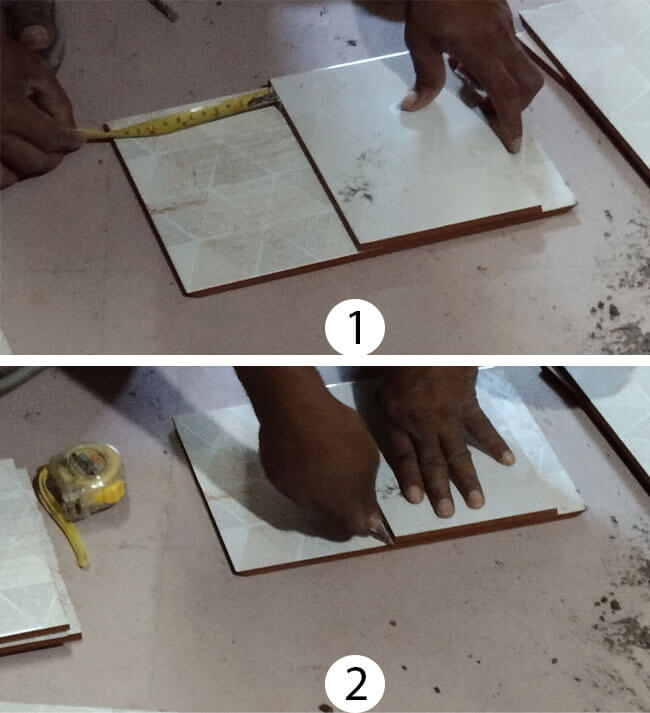
First, think that what a tile cutter or a glass cutter does basically helps get a good score. Then you put some pressure down on the tile to break in perfect two pieces.
Here you also follow the same process, first use a pencil to mark your tiles rough part, don’t draw on Shiny or upper part because we will score on it.
Then use a hanger, ruler, or another straight tile for anything you have and are comfortable with.
Use one hand to hold the ruler and do some good score with a diamond tile cutter pen or any sharp objects you have. Try to use diamond tile cutter pens.
Diamond tile cutter pens are great for cutting small sizes and fewer tiles. If you only need to cut few tiles and you’re a DIY’re then buy one. Tile cutter pens are cost-effective and a handful tool.
[Note: If you use a knife or any sharp objects that can strongly mark, you can use those tools, but I recommend not use them because there is a strong chance that tiles might damage or will be useless.]
Ensure that you have scored a few [5-8] times, not ones because if your score was not well enough in every portion of the marked line and you bend it, the result will not be perfect as you expected.
After making some good score with a knife or a sharp object, put your pencil under the tile and place it where you marked.
Then use your two hands on the tile to bend the tile, put some pressure down on the tile, and have successfully broken the tile into perfect two pieces.
Safety Measures:
The different cutting process needs all most same safety equipment. Yes, there are options of flexibility in various points that you’re going to use them or not.
These cutting processes are not so dangerous, but you must be aware of safety equipment. In most cases, you need three equipment gloves, goggles, and a face mask.
- Check the water feeding tank regularly or ensure you have a continuous water supply when you’re using the wet tile saw.
- No matter what machine or tools you’re using, a pair of gloves always helps you for better grip and safety.
- Using a good face mask is very important specially if you’re cutting with a tile saw or an angle grinder. It will protect you from unwanted dust and water drops.
- Be aware that the cut performed by you is straight; otherwise, the tile would get wasted.
- Use the earplugs to get rid of the noise if you’re using a tile saw.
FAQs
Will a manual tile cutter cut porcelain?
Yes. A manual tile cutter or snap cutter can cut a porcelain tile easily. Not only porcelain tiles, but it can also cut a variety of tiles like ceramic, glass, mosaic, porcelain, and even terracotta. But it would be best if you chose a good quality tile cutter, not a 50$ casual cutter.
What kind of blade do I need to cut porcelain or ceramic tiles?
For cutting the porcelain ceramic, mosaic, or other hard tiles, you need diamond blades. Either you are using a wet saw, or an angle grinder diamond blade is necessary equipment.
What’s the best way to cut porcelain tiles?
In my opinion, there are three best ways to cut tiles, and these are wet tile saw, angle grinder, and tile cutter.
A wet saw is a perfect option when you ask for smooth, straight cuts. That’s why if you give me one option only, then I’ll choose a wet saw.
Angle grinder and tile or snap cutters are also handy options for cutting tiles. You can have a great straight cut with these tools too.
Why won’t my tile cutters cut straight?
If you use a handheld tile cutter, there is a big chance of having these types of problems. Mark bold, visible line before cutting, place straight and properly on the platform, score two or three times and don’t push too hard start slowly to have a straight cut.
With tile cutter placement is essential as well as your focus point. For avoiding these problems, use a high-quality tile cutter, not handheld tile cutters.
Conclusion:
the six methods I have mentioned earlier in the article are the most common and popular ways to cut any tile. Using these tools/machines, not only porcelain and ceramic but also cut other tiles.
If you are going your home improvements or job task, it will be hard for you to cut all kinds of shapes using only one tool. Every machine has its own value; that’s why I try to cover five popular tools/machines.
Think that you have cut a good amount of tile pieces with a tile saw, and you have to stop your saw, but suddenly you feel that you need to cut arcs or circular sections of tile, then you definitely need a tile nipper.
The main fact is once you gather the working experience with tile cutting saw, the more you cut tile more, and you will get perfect.
I hope you enjoyed the article.
Thank you.

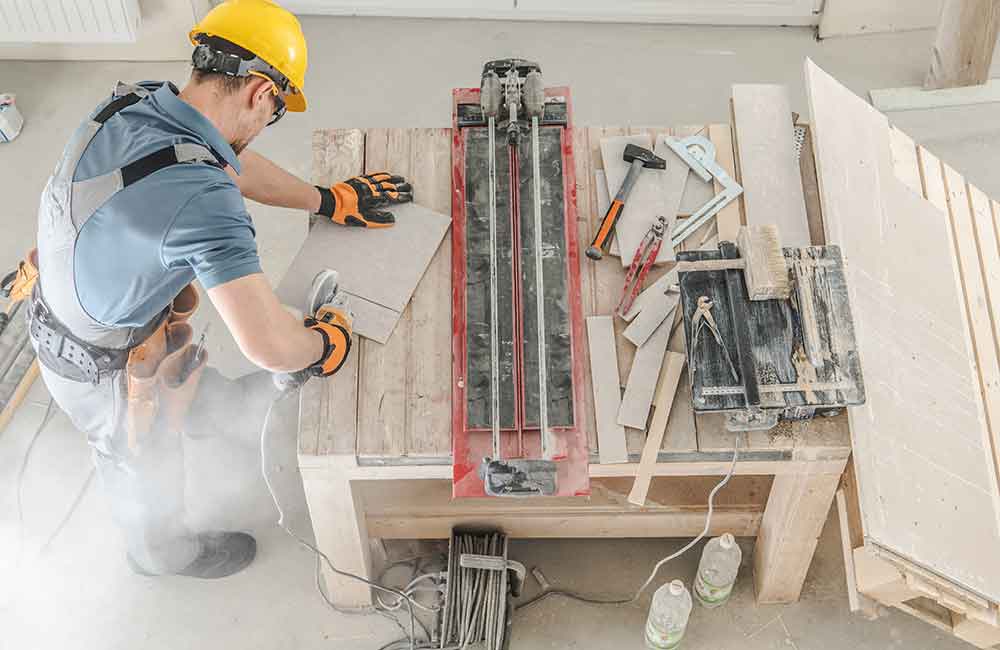
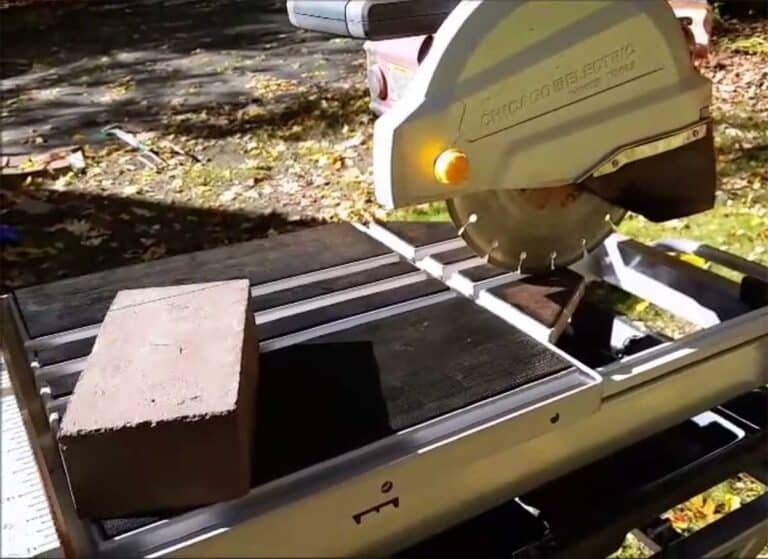
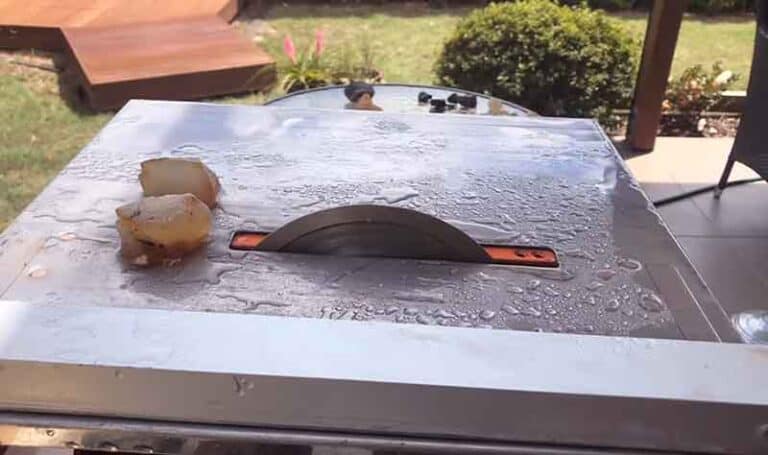


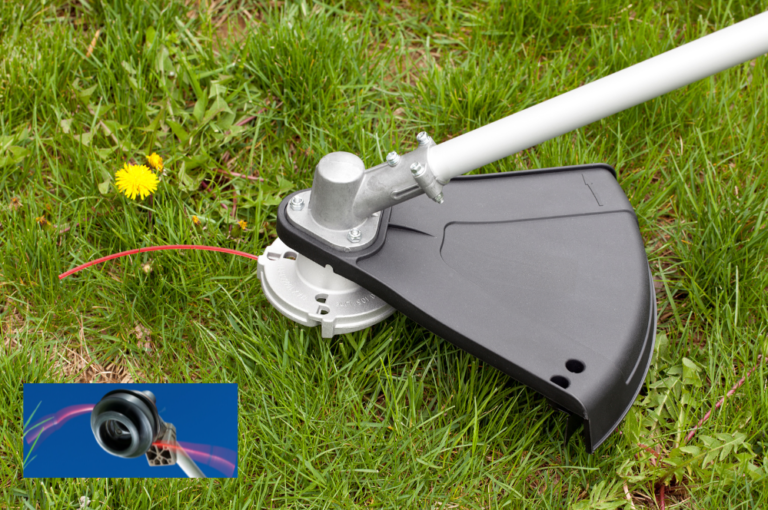
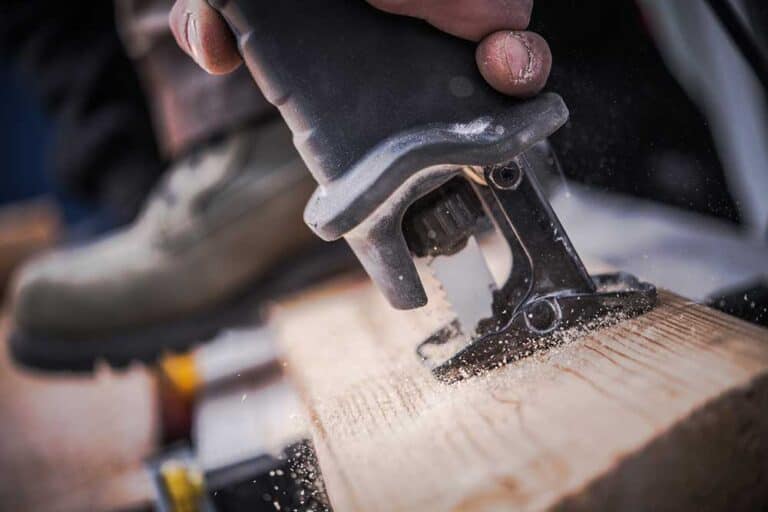
One Comment